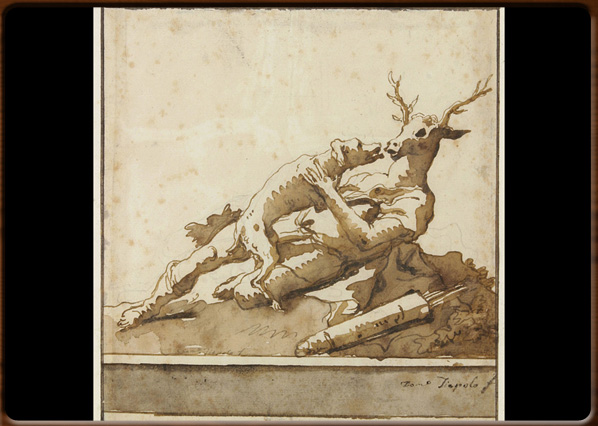Giandomenico Tiepolo (Venice, 1727-1804) was a painter and engraver of the 1700s. A descendent of one of the most important Venetian families (with two Doges among their ancestors), Giandomenico was the son of Giambattista Tiepolo.
At the age of 13, he joined his father’s workshop and then, at just 19, he was commissioned to paint the "Stazioni della Via Crucis" cycle in the Church of San Polo (1747-49).
In 1750 he accompanied his father to Bavaria to decorate the residence of Charles Philip, Prince-Bishop of the Holy Roman Empire. On returning to Venice, he joined Pietro Longhi’s workshop and his uncle Francesco Guardi. However, he continued to work with his father on Villa Valmarana (Vicenza) and Villa Pisani in Stra, near Venice.
Then, in 1762, he went with his father and brother Lorenzo to Spain, as guests of King Charles III in Madrid to do the frescoes in some rooms of the Palacio Reale.
After the death of his father, he became a teacher at the Accademia delle Belle Arti in Venice (now the Gallerie dell’Accademia), where he also painted his Abram and Angels (1773), one of his best works.
Other later works include a series of frescoes in (1791-93), where the influence of his father’s style and greatness is particularly obvious.



